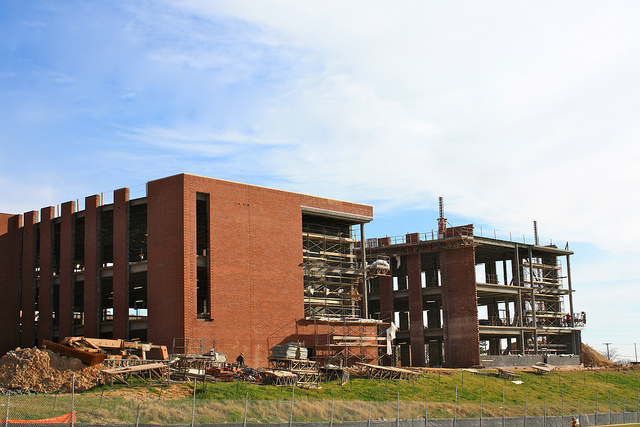By Georgia Slater
Capital News Service
Building additional schools and pushing for more up-to-date, efficient and innovative design proposals is under review by a state panel charged with examining school construction.
Today, an estimated 65,297 students in Maryland public schools are in temporary classrooms such as trailers, and there is $23 billion in estimated statewide school construction needed through fiscal year 2023, according to the Maryland State Department of Education and local schools.
Sen. Jim Rosapepe, D-Anne Arundel and Prince George’s, discussed a revised version of an earlier bill, the Maryland Overcrowding Reduction Act of 2018, at Tuesday’s meeting of the 21st Century School Facilities Commission in hopes of combating school overcrowding problems across the state.
The legislation did not pass last spring, but Rosapepe said he is confident in his revisions and efforts for the upcoming session.
“Facilities are one thing — we need them. I don’t see us educating in cornfields. They’re just as important as the programs taught,” said Martin G. Knott Jr., chair of the commission set up by Senate president and House speaker.
Unaffordable needs, but locals can cut costs
Rosapepe explained that this $23 billion construction estimate is unaffordable, and the state and local governments will not significantly boost borrowing for schools in order to pay for all of the projects. All 24 jurisdictions have the ability to build and repair schools at much lower costs, Rosapepe told the commission.
Schools prioritize their money in different ways, he said, and one school might spend more on a building’s upkeep and another on hiring a new math teacher.
According to the Department of Legislative Services, the average cost for a new public school is $46,000 per student, but recent construction costs in Maryland have ranged from $19,000 to $87,000 per student, a large gap that Rosapepe wants to narrow.
The goals of the legislation are to reduce overcrowding, repair old buildings and to end the need for portable classrooms. By designing, approving and building schools faster, reducing costs per student for new schools and incentivizing 21st century construction methods, Rosapepe said, change can be made.
For example, Rosapepe said, there no longer is a need for computer labs in schools now that students can bring their own devices. By cutting out an entire room, this is demonstrating 21st-century development techniques and is just one way that schools can be more cost-effective.
Similarly, old buildings can be converted to save money. Baltimore’s Monarch Academy, which enrolls 990 students, was formerly a Coca Cola Bottling Plant.
Number of projects could rise
According to Rosapepe, with these strategies, the number of school construction projects can increase by 50% at no additional cost by just reducing the average cost per student. However, there would be no mandated changes for local school systems and governments who do not opt in to these recommendations, under the bill.
Additional recommendations dealt with setting funding goals and reviewing school designs. Recommendations in discussion included conducting statewide facility assessments and streamlining the review process for projects.
“These recommendations are spot on, they are a great step forward and we support the senator’s recommendations,” Stephen Baldwin, a commission member, said.
Before the final meeting in December, Knott said, the commission will hone their recommendations and are expecting members of the commission and others to weigh in on them.
“If anyone thinks we’re stuck in the past, we’re not. We’re moving forward. We’re taking bold initiatives,” Knott said.
At a meeting Wednesday, Maryland’s Board of Public Works unanimously approved $426 million for Baltimore City public schools’ construction and revitalization — a 21st Century Schools project.





Recent Comments